Sales funnel – today it is all about the customer journey
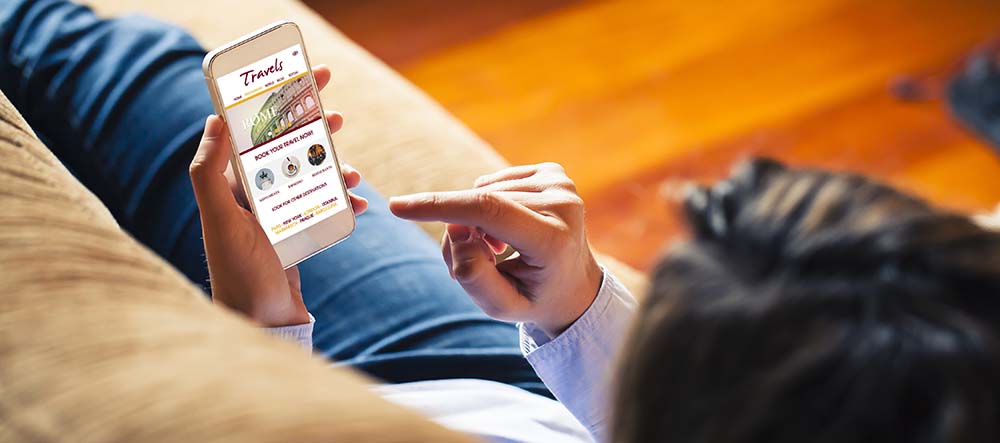
Sales Funnel – drop it: How to Convert More Leads With a Customer Journey
Did you know that the sales funnel model can actually cost you, clients?
According to the traditional sales funnel process of helping people go from being total strangers to your company to become loyal clients, people follow a set, linear path from the first contact to purchasing a product and beyond.
But in reality, the customer journey is far more complex than that, and if you don’t account for that complexity, you’ll lose a lot of leads that could have become repeat buyers.
When you have a strong, compelling customer journey established in your business, your leads and clients have a better experience, your revenue increases, and you get more reviews and a better reputation in your industry.
In this two-part blog series, I’m going to explain what steps your clients go through in the course of traversing your customer journey, as well as the methods you can use to implement those steps and map out your customer journey, so you can convert more leads and get more high-paying clients.
Why does the “sales funnel” model no longer work?
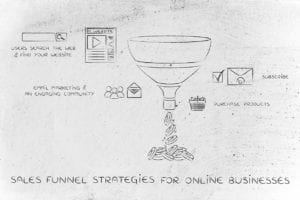
Sales Funnel strategies for online businesses
In the “sales funnel” model, clients are expected to move predictably from each step to the next, taking the path the business owner expects.
For example, you might expect someone to click a Facebook ad that leads to a webinar signup page, watch the webinar, click through to your sales page, and buy the product.
But this doesn’t account for the countless ways in which people can get distracted, take an action you don’t expect, or stumble upon the middle of your funnel instead of starting at the beginning.
For instance, after watching the webinar, they might click to the sales page, wander off to explore their other options or research your company, return to your site later to read a blog post, check out another product, contact your customer support to learn more about your product, and THEN be sold the product you were originally trying to sell.
In the “customer journey” model, you take those variables into account, so instead of losing leads when people act in a way you don’t anticipate, you keep people interested when they might otherwise have wandered off.
You also take steps to retain your existing customers, which will massively increase your marketing budget’s ROI.
The internet has empowered people to solve problems, and a good customer journey enables you to show them that YOU are the solution they’ve been looking for.
What you need to know before you create your customer journey
There are seven basic phases to the customer journey, but different people will navigate those phases differently, and certain types of people will be drawn to
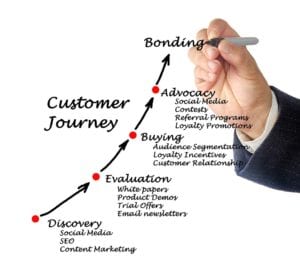
your brand and personal style more than others. In any case, understanding that the sales funnel is now in the hands of the buyer is the first hurdle to overcome.
Because of this, there are two factors you need to be clear on before you start working on your customer journey:
Factor 1: Why you’re in business.
In all likelihood, you started a business for several reasons. For most people, these reasons include:
- Helping people by providing services, information or products that they need.
- Making more money than you could as an employee.
- Owning your schedule, and creating the lifestyle you desire.
Whatever your reasons are, they should be the guiding star for every plan you make for your business, including your customer journey. Because of this, it’s important that they be clear and specific.
How many people do you want to help in the next five years, and in what ways do you want to help them?
For example, you could say, “I want to help two thousand cancer patients to get their appetite and strength back. I’ll do this through my products, books, blog posts, social media posts, and guest speaking events”.
How much money do you want to make, in the specific time and dollar amounts?
For instance, you might want to earn $20,000 each month. When you’re choosing this number, don’t just say “I want to make more money” – you can’t make a plan around a statement that vague. When you know how much money you want, you know how many units you need to sell and at what price.
Which hours do you want to work each day, and what kind of work do you want to do?
By answering these questions, you can help to make sure that the customer journey you create meshes with the change you want to make in your clients’ lives, the lifestyle you want to create for yourself, and the number of people you need to reach in order to make enough sales to reach your revenue goals.
Factor 2: Who your ideal client is.
In order to create an effective customer journey, get a good ROI for your marketing efforts, and create a product that people really want, you need to know who your ideal client is.
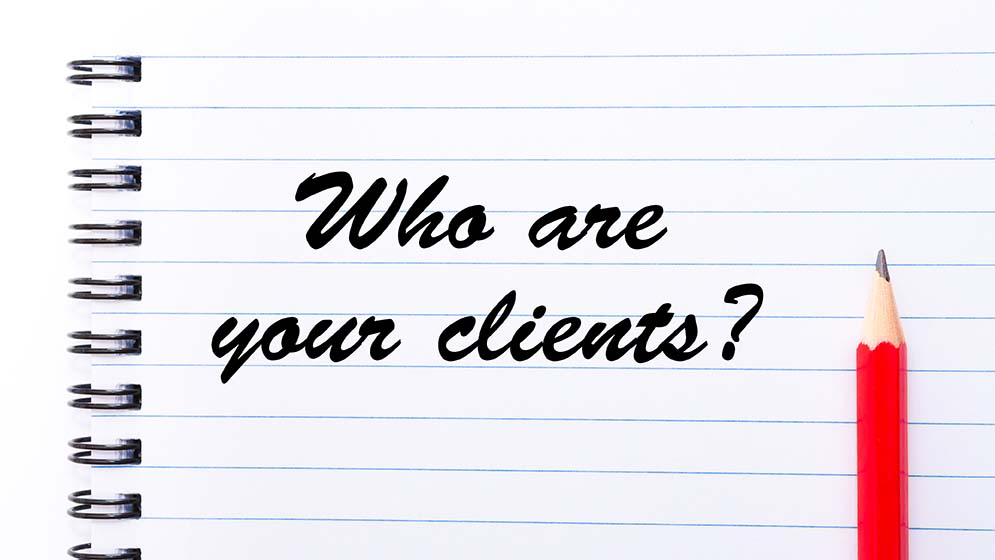
Who Are Your Clients?
When you know who your target demographic is, you’re better equipped to figure out what they want, what’s important to them, where they look for information about the problems you solve and the benefits you provide, what unique challenges they face, what will draw them to your business, and what will drive them away.
Even if you could theoretically serve almost anyone on the planet, there will still be a group that relates to you more, like you more, or is a better fit for your personality or service style than others. And even if you attract customers from multiple demographics, you’ll probably notice that one group buys from you more frequently than others.
Nobody has the time or budget to reach EVERYONE on a regular basis, so if you want the highest possible return on your investment of money and effort, you need to target the people who are the most likely to make a purchase.
If you’ve read the article I linked above, and you still need help to identify your ideal client and their goals, I invite you to use onCOREventure’s Ideal Client Persona Worksheet and Ideal Client Description Form to learn more about how to define your ideal clients, and how to know when a person you’re talking to is one of those clients.
You now know who you want to take this journey, and what you want them to experience.
Now that you know what you’re helping people to do, why you’re doing it, and who to tailor your assistance to, you need to understand what kind of journey you’re going to take them on.
I’ll give you more information about mapping your customer journey in the next blog post, but for now, I’m going to explain what phases your potential clients go through in the course of their journey, and what you need in order to help them move through each phase, so they don’t get stuck or wander off halfway through their journey.
The phases of the customer journey sales funnel
In this section, I’ll break down the phases your customers will go through in the course of going from total strangers to repeat clients who send you more customers, and I’ll explain what materials and strategies you’ll need for each of those phases.
Phase 1: Know
In the “know” phase, they’re getting to know you for the first time.
In this phase, you encourage them to find you, check you out, and stick around long enough to learn more about you.
A good way to do this is by creating informational materials that address problems and desires they know they have, give them the information they know they need and educate them about why your company is uniquely qualified to help them get what they want.
To guide your potential customers through the “know” phase, it’s important to have a compelling message that resonates with your target audience, and to clearly communicate:
- Who you are, and what field you specialize in.
- What specific problem you solve for your ideal client.
- That you understand their problems. This can be conveyed by giving them solutions in your educational marketing, and by telling the story of how you or your clients used your methods to overcome similar problems.
- What solutions are available to them.
- How to take the next step, and why they should take it.
How to implement the “know” phase of your customer journey sales funnel:
If you want people who have no idea you exist to take the time to get to know you, you need to put the information they want to consume in places where they’re already looking for it.
Methods for doing this include:
- Creating profiles in directories and citation sites.
- Posting useful information in online forums, hashtags and social media groups your ideal clients often visit.
- Advertisements leading to educational materials.
- Referrals from satisfied customers, friends, and fellow business owners.
- Videos, blog posts, podcasts, articles, and other educational content on topics they often look for in search engines.
At the end of each piece of educational content, including a Call to Action, or CTA, that tells them exactly what step to take next, and how they’ll benefit from taking it.
Phase 2: Like
Now that they know who you are and what you do, it’s time to get them to like you, and to make it clear to them that you have what they want.
During this phase, you want to communicate:
- How you implement a solution to the problem your customers know they have.
- How you’re different from other people and companies in your field.
- The benefits that your clients receive from your solution.
How to implement the “like” phase of your customer journey sales funnel:
To get people to like you, you need to show your company’s personality, and to give them the value that they’ll be grateful for. This can include answers to their questions, lists of tips, how-to guides, and other information they desire.
Methods for doing this include:
- Your website, bio, and blog.
- Your email newsletter. Be sure to send approximately seven value-based emails with good information for everyone sales-based email that asks them to do something.
- Conversations with potential clients in situations like networking events, follow-up calls, and online groups and forums.
- Educational videos, podcasts and speaking gigs.
While you’re talking to your current and potential clients, pay attention to their questions and comments, and do your best to respond promptly. In your materials and CTAs, make it clear how your offer is different from your competition and will benefit them more.
Phase 3: Trust
In this phase, you establish your quality and credibility.
Strategies for this phase include:
- Testimonials from clients for whom you’ve gotten great results.
- Your referral partner’s personal experience, which they can share when they’re making the introduction, or can offer to share by being available for a reference call.
- Reviews from satisfied customers on review sites.
- Written and video reviews on your website, preferably structured in a way that makes it easy for search engines to find them.
- Responding promptly to negative reviews, to show onlookers that you take your clients’ concerns seriously and will take quick action to rectify problems.
- Your marketing kit, including ebooks and sales presentations.
How to implement the “trust” phase of your customer journey sales funnel:
When your customers are satisfied, ask them to leave reviews on your profile pages and to provide testimonials.
If your customers are too busy to write a review from scratch, or they don’t know how to convey their experience in a way that will draw other people to your business, try offering them pre-written reviews that they can tweak and post.
Another method is to ask them questions about their experience with your company, the challenges they were struggling with before they met you, and the results they got from their purchase, then ask if you can post their answers on your site as a testimonial.
In situations where your customer isn’t satisfied, make sure it’s easy for them to contact your customer support, and that your support staff is well trained and knows how to solve the problems your clients bring to them.
If you’re interacting with a major potential client personally, especially if you sell low volumes of expensive items as opposed to high volumes of cheap items, try to do your sales presentation face to face if possible, or at least via a video-and-audio method like Skype.
Phase 4: Try
In the “try” phase, you let the customer try out a one-time “bread and butter” offering that’s easy to say “yes” to, and that demonstrates your ability to deliver. This could be a sample product, a small service or information product, or some other low-or-no-cost offer.
At this point, you’re giving them the basics that they need to get results. This offer doesn’t need to be extravagant or fancy, but it should offer tangible value to your customer. This is your chance to show off your new customer kit, and let people see how you welcome a new customer.
How to implement the “try” phase of your customer journey sales funnel:
For this phase, you’ll need a sales page or landing page where your customer can take action, as well as emails and social posts to make people aware of the offering’s existence.
The “try” offer should educate people about why they need your “buy” offer. It’s also good to have different marketing campaigns, or branches of campaigns, based on what the customer does, such as signing up for a webinar but not attending.
For example, if a person signs up for a webinar but doesn’t attend, they should get a different set of emails than the people who do attend.
Types of “bread and butter” offers you can make include:
- Free webinars that give them a larger sample of your expertise than you could offer in a blog post.
- An evaluation or consultation to show your analysis skills and see if you’re a good fit.
- Free or low-cost samples of your product or program.
Phase 5: Buy
In this phase, you give them your “cream” offer – which is to say, your mid-range product. This product will generally provide eighty percent of your sales, and it’s both the client’s first real purchase and the one that leads to sustainable revenue for you.
The “cream” offer should be a natural progression from the “bread and butter” offer, with the first offer whetting their appetite for the second and helping them to understand why they need it.
For example, if the “try” offer was a free webinar, that webinar should have helped people to understand why they couldn’t get the results they needed by doing things by themselves and showed them that they need to either hire someone to do it for them or take a course to learn how to do it correctly.
This offer can include multiple levels of participation for people with different budgets and needs. The packages on this page are a good example.
We recommend having a basic offer for people who value money more than time, a more comprehensive and expensive one for people who are busy and profitable enough to value time over money, and a middle ground.
How to implement the “buy” phase of your customer journey sales funnel:
As with the “try” offer, the “buy” offer will require a sales page, and it should be designed to what the customers’ appetite for the next offer in your customer journey.Your “buy” offer should include your new customer kit, and the process of fulfillment, delivery, and financial arrangements should be made as easy for your client as possible.
Depending on the product, you may also need contracts or legal agreements. Be sure to give your customers plenty of time to look them over, and make them as easy to understand as possible.
Phase 6: Repeat
Often, your best customers will be the ones who have already been wowed by your products in the past. Because of this, the people who’ve bought your “buy” offer, or your “cream” offer, are the ones who are the most likely to buy the item in the sixth phase: your “dream” offer.
The “dream” offer is an upsell from your “cream” offer, and it’s your most comprehensive, valuable, and expensive offering. As with the “cream” offer, you can offer multiple levels of participation, so people can choose a number of features they need and the amount of money they’re willing to invest.
How to implement the “repeat” phase of your customer journey:
One way to gauge your clients’ readiness for your “dream” offer is to give your “cream” clients a customer survey and ask them to rate your business.
If the rating is high, ask for a review, and let them know what else is available to them. And if it’s low, give them a chance to vent, and offer to fix the problem.
Another good way to get your best offer in front of people is to host quarterly events, invite your past clients, and give them both good value and an offer to purchase your “dream” product during the event.
A third method is to offer a subscription, bulk purchase, or recurring purchase for your “cream” offer. For example, if that offer was a single event, the “dream” offer could be lifetime tickets to ALL of your events.
If your offer is something that can wear out, run out or expire, always make it easy for people to find and purchase replacements and refills.
When designing your top offer, pay attention to what people say the “cream” offer was missing, or anything they wish could be done for them or made easier. This will help you to create a “dream” offer that’s exactly what your clients want.
Phase 7: Refer
In this phase, you give your clients reasons to refer people to you, and methods with which to do so.
Referral marketing is one of the most powerful types of marketing available because it effectively compresses the first four to six stages of the customer journey into one.
“Dream” clients often know other people who might be interested in your “dream” offer, so by getting a referral from one of them, you could make a high-end sale without having to implement the preceding steps with the referred client.
When you receive a referral, you effectively inherit the “know, like and trust” that the referring party has already built up with the person they send to you. This is one of the reasons why it’s so vital NOT to neglect your existing customers in favor of chasing new prospects – they’re not just your hottest leads, but they’re also some of your best marketers!
Ideally, you want to build a tribe of loyal, passionate fans, like Apple has with its brand and products. Apple users often feel like they’re part of the Apple tribe, and that in itself has value to them and makes them want to bring more people into that tribe.
How to implement the “refer” phase of your customer journey:
To start with, give them a reason to refer you. These reasons could include:
- Liking you and your company.
- Wanting to help other people to get the great results they’ve gotten.
- Financial incentives, like commissions and referral fees.
- Discounts on future purchases in exchange for making referrals.
- Mutual referral arrangements.
Once they’ve agreed to refer people to you, be sure to equip them to do so. Not everyone knows how to describe your offerings in ways that get people interested, so provide them with sample messages and swipe copy they can use to invite other people to check you out.
One way to help satisfied clients know how to refer people to you is to review the results you’ve gotten together and to give them a “before and after” picture, so they have a clear idea of how far you’ve helped them come and how you did it.
Most of the time, people will refer people on the level at which they invested – for example, “cream” clients will bring you “cream” referrals. But if you have an effective, formalized mechanism for getting referrals from your key strategic business relationships, you can actually get people to bring you referrals on levels above the one at which they invested.
For example, if you helped a 20-million-dollar software company to get to 100 million, they might introduce you to another firm that’s already at the 100 million mark and wants to grow to 500 million.
I’ve been able to create a mechanism like this within the structure of the BNI of Western Pennsylvania, and I’d be happy to help you do the same.
What’s the next step to move past the sales funnel?
As you can see, there are a lot of different methods you can use for each phase of the customer journey. In our next blog later this month, we’ll help you to map out the methods you want to use in your business, so you know how to apply the customer journey model to your unique company.
In the meantime, I have an invitation for you.
We’re all busy running businesses. As a small business owner myself, I understand this more than most people who offer digital marketing advice. I also understand that you’re busy each week running your business, and you don’t have time to search for answers and information on blogs made by people who don’t understand your challenges and needs.
If you found the information in this blog useful, I encourage you to get great business tips like this delivered conveniently to your inbox by subscribing to my monthly newsletter, “Grow Your Small Business”. Our first issue will include links to the complete three-part series of how to identify your ideal client, introduce the customer journey and finally map your customer journey.
It’s full of information like this that helps small business owners to attract more clients, run their business more efficiently, and increase their revenue, time freedom, and impact on the world.
I promise not to send spam to you, and I do not share my mailing list with anyone.
Click on the image below to get started.

Image credits – Adobe Stock
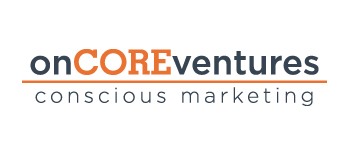
[…] out, you’re probably missing a lot of opportunities to attract and convert leads. There are seven stages that people tend to go through while traversing the path from stranger to repeat client, and knowing how you’ll help them […]
[…] isn’t designed to rush someone into an ill-advised impulse purchase. Instead, it’s designed to guide people through the customer journey by giving value every step of the way, from when they first become aware of your business until they know, like and trust you enough to […]
[…] important to know how your bread and butter, cream and dream clients enter your customer journey and travel through it, and what they’re looking to learn, receive or accomplish at each […]
[…] clients in different stages of their customer journey may have different questions or interests, so it’s important to know who you’re targeting with […]
[…] However, if you set the pop-up to trigger at the END of the content, then they only see it once they’re finished reading and are ready to move forward. Now, instead of being an annoying interruption, it’s a convenient guide to the next step in their customer journey. […]
[…] get a new customer to make a purchase, you need to bring them through their customer journey from square one, unless they were referred to […]
[…] In this blog post, we’ll tell you how to get your visitors to stay on your page, pay attention to your offer, and take the next step in their customer journey. […]
[…] call to action should be the next thing they’ll logically need in their customer journey, such as a webinar that demonstrates your software in action, a complimentary inspection, and […]
[…] they should know EXACTLY what they’ll learn and how it will help them. At this early stage in their customer journey, people will often be looking for a single benefit or the answer to a specific question, so focus […]